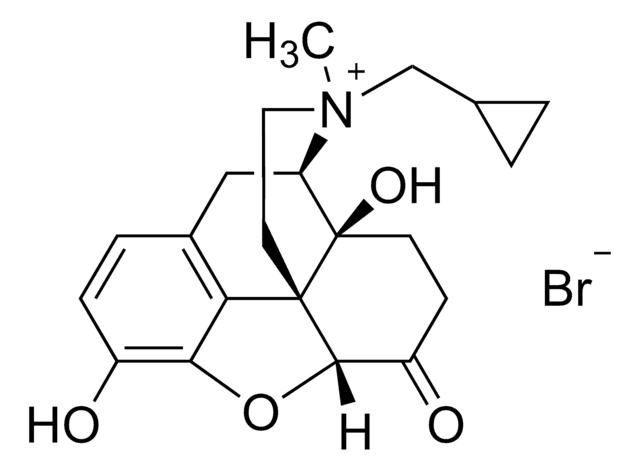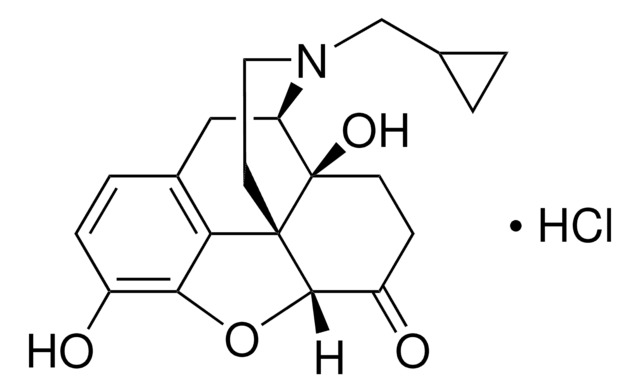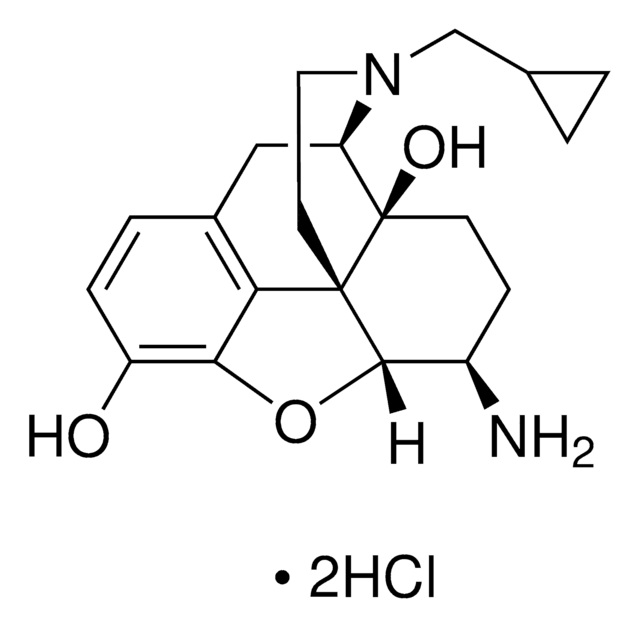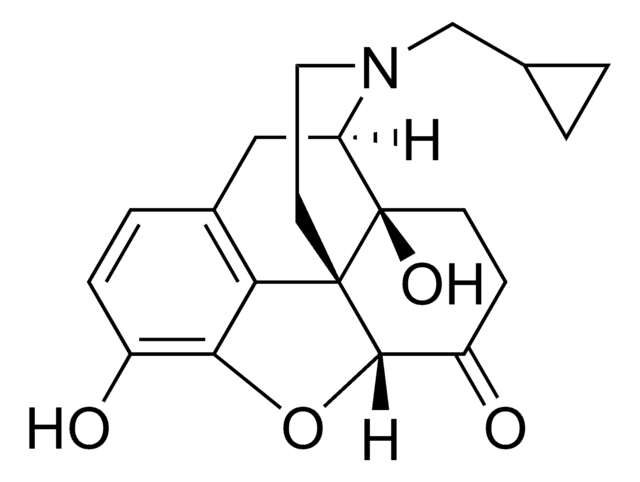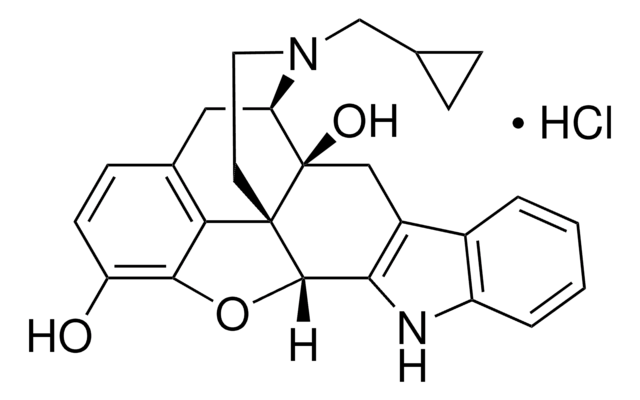SML0277
Methylnaltrexon
≥97% (HPLC)
Synonym(e):
(17RS)-17-(Cyclopropylmethyl)-4,5α-epoxy-3,14-dihydroxy-17-methyl-6-oxomorphinaniumbromid, N-Methylnaltrexon, MNTX, Methylnaltrexon, Mrz-2663, Naltrexon-Methobromid, Quartäres Ammoniumderivat von Naltrexon
About This Item
Empfohlene Produkte
Qualitätsniveau
Assay
≥97% (HPLC)
Form
powder
Lagerbedingungen
desiccated
Farbe
white to beige
Löslichkeit
H2O: ≥5 mg/mL
Versandbedingung
wet ice
Lagertemp.
−20°C
SMILES String
[Br-].C[N@+]1(CC[C@]23[C@H]4Oc5c(O)ccc(C[C@@H]1[C@]2(O)CCC4=O)c35)CC6CC6
InChI
1S/C21H25NO4.BrH/c1-22(11-12-2-3-12)9-8-20-17-13-4-5-14(23)18(17)26-19(20)15(24)6-7-21(20,25)16(22)10-13;/h4-5,12,16,19,25H,2-3,6-11H2,1H3;1H/t16-,19+,20+,21-,22?;/m1./s1
InChIKey
IFGIYSGOEZJNBE-KNLJMPJLSA-N
Angaben zum Gen
human ... OPRM1(4988)
Suchen Sie nach ähnlichen Produkten? Aufrufen Leitfaden zum Produktvergleich
Allgemeine Beschreibung
Anwendung
Biochem./physiol. Wirkung
Leistungsmerkmale und Vorteile
Signalwort
Warning
H-Sätze
Gefahreneinstufungen
STOT SE 2 Oral
Zielorgane
Gastrointestinal tract
Lagerklassenschlüssel
11 - Combustible Solids
WGK
WGK 3
Flammpunkt (°F)
Not applicable
Flammpunkt (°C)
Not applicable
Analysenzertifikate (COA)
Suchen Sie nach Analysenzertifikate (COA), indem Sie die Lot-/Chargennummer des Produkts eingeben. Lot- und Chargennummern sind auf dem Produktetikett hinter den Wörtern ‘Lot’ oder ‘Batch’ (Lot oder Charge) zu finden.
Besitzen Sie dieses Produkt bereits?
In der Dokumentenbibliothek finden Sie die Dokumentation zu den Produkten, die Sie kürzlich erworben haben.
Artikel
We offers many products related to opioid receptors for your research needs.
Unser Team von Wissenschaftlern verfügt über Erfahrung in allen Forschungsbereichen einschließlich Life Science, Materialwissenschaften, chemischer Synthese, Chromatographie, Analytik und vielen mehr..
Setzen Sie sich mit dem technischen Dienst in Verbindung.